Harsh practice: what is our wireless in use by hoteliers
Colleagues from the PR-service for several years collecting cases, which use our corporate-class equipment. A significant part of them are projects in the field of hospitality. This is due to the fact that this area is one of the key components of the TP-Link project direction, and also the fact that such cases often turn out to be the most interesting from the professional side.

In fact, most hotels want solutions to the same tasks:
The topology of such a network on TP-Link equipment may look as follows:
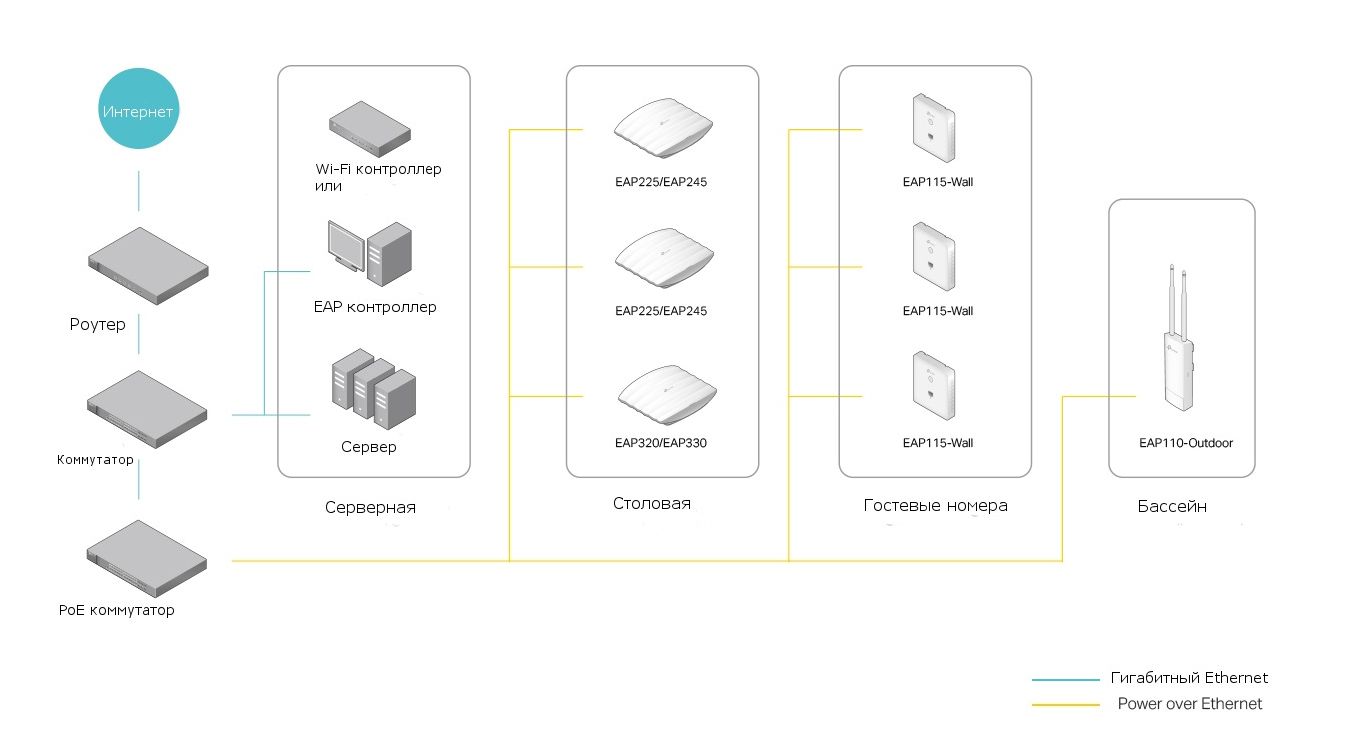
The choice of models may vary depending on the budget and goals, but the general principle remains. At one time, we prepared several visual tables that allow you to easily navigate through the TP-Link nomenclature for such projects.
Studying reviews on European resort hotels, you can see that they rarely have high-quality Internet. In Russia, the picture is generally better, although not everywhere. At the same time, we have one of the lowest Internet access rates in the world.
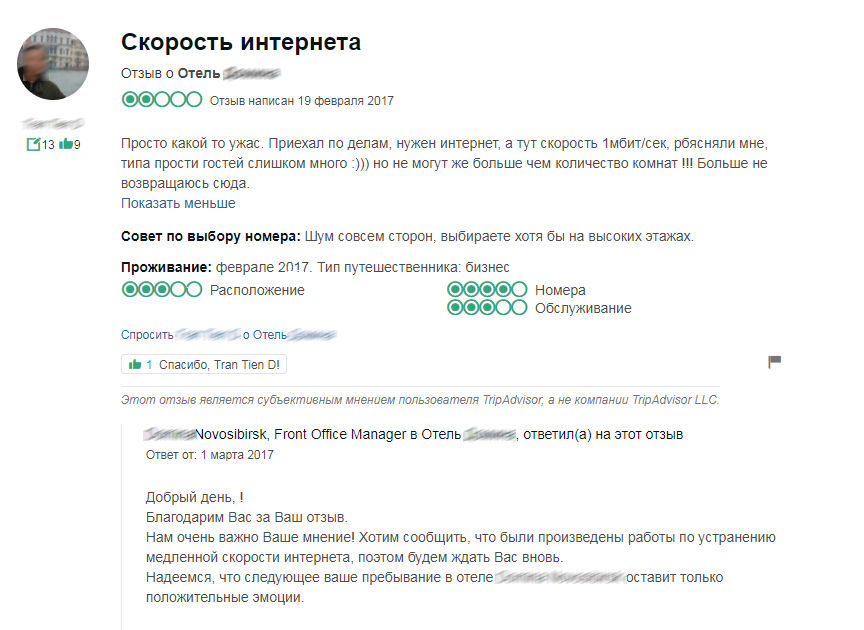
For this post, we got out of the archive and commented on a couple of typical cases that form the routine of the project department both in Russia and abroad. There will be not very many technical details here, since we have revealed the issues of network construction schemes and applied technologies in one of the previous articles. And this time we will be brief.
Hotel complexes Izmailovo in Moscow, hotels Gamma and Delta (3 and 4 stars).
2,000 double rooms, 360 access points.
This is one of the unique hotel complexes in Moscow, built for the Summer Olympics of the 80th year and one of the five largest hotels in the world.

Currently, Gamma and Delta hotels, located in the same building, are undergoing floor repairs, as the network infrastructure is being upgraded, including new Wi-Fi access points.
To find the best places for the location of access points, we conducted a radio survey of one of the floors of hotels. Then the customer tested various vendors' solutions in the lobby. As a result, the hotel management chose our equipment.
At the radio planning stage, we considered two options: with the location of access points in the corridors (1) and inside the rooms (2).
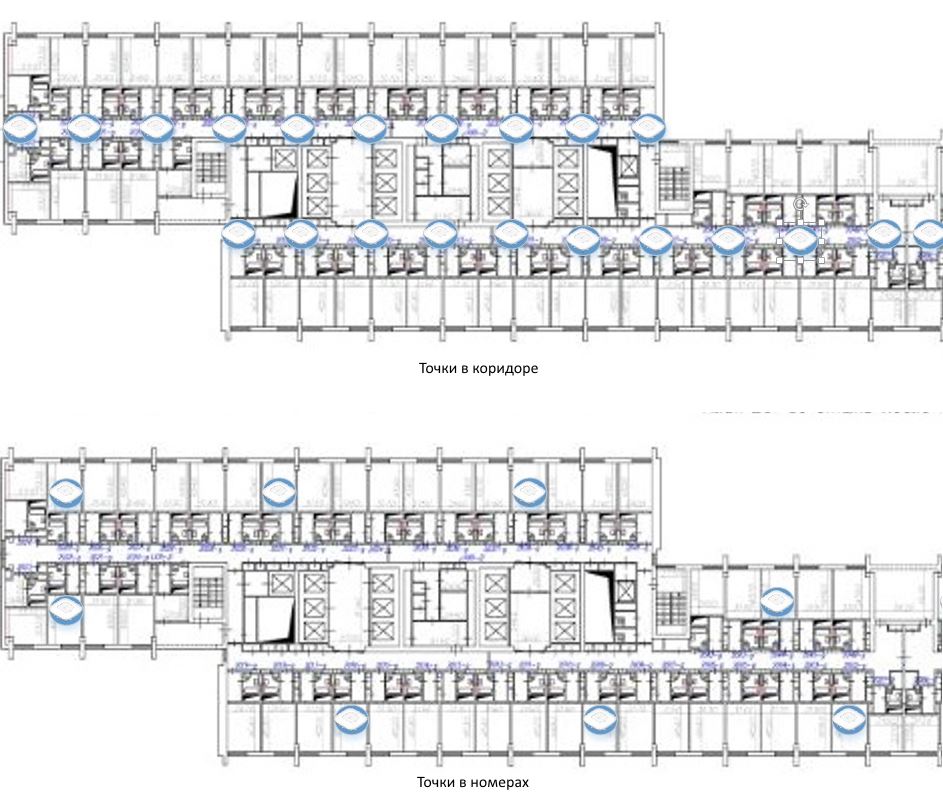
According to the results of the survey, together with the customer, we chose the option with the location of CAP1200 points in the rooms. In this case, confident Wi-Fi reception was maintained in the 2.4 and 5 GHz bands with a signal of at least -65 dBm, as indicated in the customer's requirements, and the number of access points to the floor was reduced.
After installing the points, we conducted an additional survey to make sure that everything is configured correctly, the requirements for coverage and network speed are met and the necessary customer services are working properly. When implementing such projects, we, as a vendor, provide our clients with full-fledged pre-sale and subsequent support, as well as give recommendations on how to set up.

Switch T2600G-28MPS
Switches T2600G-28MPS and two AC500 controllers , capable of controlling 500 points each, were responsible for the operation of access points in this project .
Al Hayat Hotel Apartments in the United Arab Emirates.
4 stars, 85 rooms, 10 suites The
hotel has the infrastructure for business meetings, family vacations and international tourism. When modifying the network, the administration decided to rely on high-performance solutions aimed at supporting mass viewing of HD video (we all understand that even cable television is increasingly being replaced by services like Netflix).
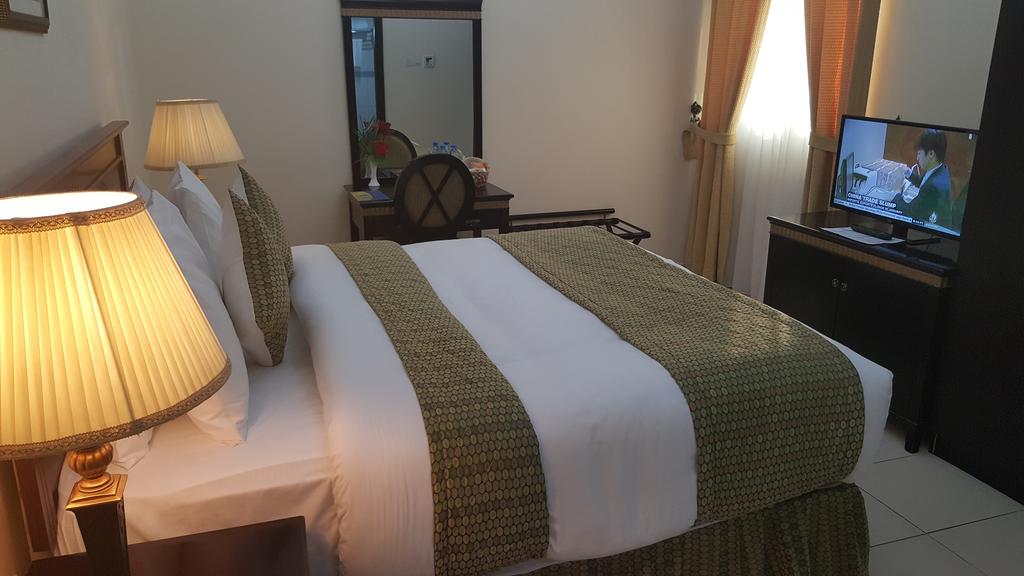
The decor is closer to home. The Internet should also be “like at home”.
The main difficulty was the impossibility of installing separate access points in each room - management demanded to place them in the corridors. Another problem was the Wi-Fi coverage in the two-bedroom rooms. As a result, the hotel management has formulated to us the following list of requirements:
Based on the radio survey and the thermal map of the hotel that we compiled, we calculated that in this case, a fast and seamless coverage can be provided using 36 EAP320 ceiling access points . The access points are connected by two POE T2600G-28MPS switches , each of which is able to connect and power up to 24 EAP points.
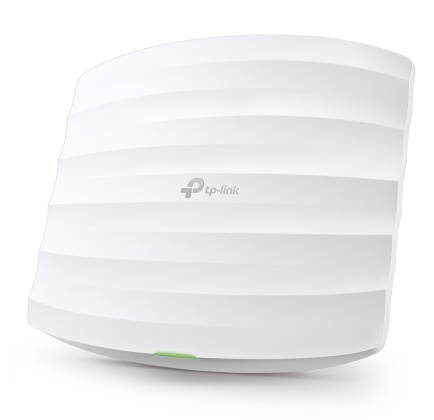
The points are powered by a network cable (Power over Ethernet), which reduces the cost of laying power cables and, again, allows you to more carefully manage the interior. The presence of two access ranges allowed to dilute "heavy" HD-clients and undemanding user devices.
Control is implemented through our free software Omada (EAP) controller . Thanks to him, the staff was able to centrally manage the settings (for example, to set the maximum priority for the traffic of the service of accepting electronic orders and billing, whereas previously the network load could hang these processes) and monitor the network.
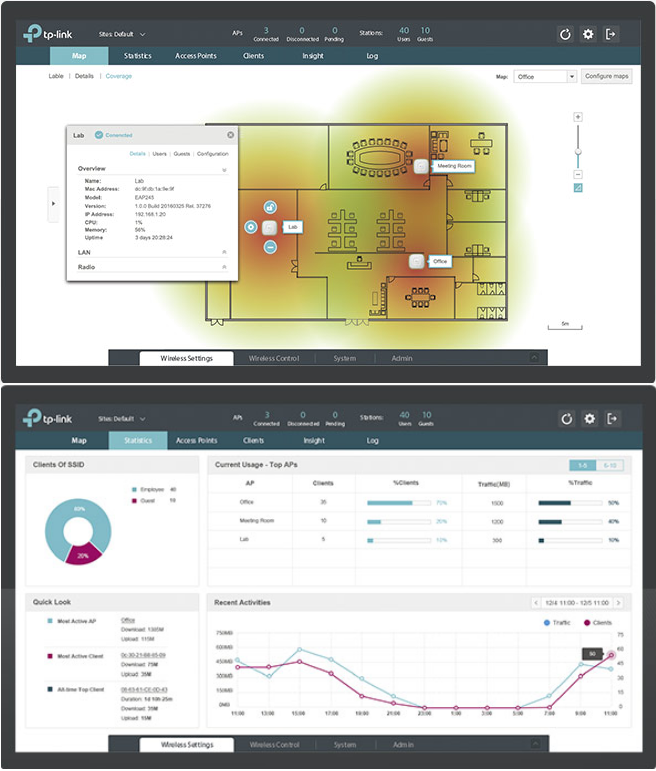
The main functions of the EAP Controller (Omada Controller):
These cases cover several typical situations that hotels face when upgrading networks. And they are all solved with the help of our standard lines, which we design, including with a view to the hotel business. For example, they can implement user authorization through the guest portal, they allow you to adjust the bandwidth of specific devices and create policies for its distribution. Most of them are easily controlled using the EAP Controller software (Omada Controller), which does not require additional training for specialists and is intuitive.
Another moment. Hotels always strive to provide customers with such a service that would guarantee them a more peaceful stay. Getting access to the Internet through a public network at the same time should be simple and comply with the requirements of current legislation - therefore, EAP and CAP access points allow customers to pass SMS authentication using services such as Wi-Fi Now and Twilio, as well as authorization through the social network Facebook (suitable for countries where identity authentication is not required in public networks). This does not require the installation of any add-ons - all the functionality is already sewn into the web interface of both controllers.

About typical hotel requirements
In fact, most hotels want solutions to the same tasks:
- Provide Wi-Fi in the rooms and on the street and thus guarantee a positive user experience.
- Provide client authentication (and reduce network load by blocking unauthorized clients).
- Organize the display of advertising and promotional content, plus the primary collection of data for analyzing preferences.
- Provide easy centralized management and cost-effective network maintenance.
The topology of such a network on TP-Link equipment may look as follows:

The choice of models may vary depending on the budget and goals, but the general principle remains. At one time, we prepared several visual tables that allow you to easily navigate through the TP-Link nomenclature for such projects.
Studying reviews on European resort hotels, you can see that they rarely have high-quality Internet. In Russia, the picture is generally better, although not everywhere. At the same time, we have one of the lowest Internet access rates in the world.

For this post, we got out of the archive and commented on a couple of typical cases that form the routine of the project department both in Russia and abroad. There will be not very many technical details here, since we have revealed the issues of network construction schemes and applied technologies in one of the previous articles. And this time we will be brief.
Example # 1 - Solution with a hardware controller
Hotel complexes Izmailovo in Moscow, hotels Gamma and Delta (3 and 4 stars).
2,000 double rooms, 360 access points.
This is one of the unique hotel complexes in Moscow, built for the Summer Olympics of the 80th year and one of the five largest hotels in the world.

Currently, Gamma and Delta hotels, located in the same building, are undergoing floor repairs, as the network infrastructure is being upgraded, including new Wi-Fi access points.
To find the best places for the location of access points, we conducted a radio survey of one of the floors of hotels. Then the customer tested various vendors' solutions in the lobby. As a result, the hotel management chose our equipment.
At the radio planning stage, we considered two options: with the location of access points in the corridors (1) and inside the rooms (2).

According to the results of the survey, together with the customer, we chose the option with the location of CAP1200 points in the rooms. In this case, confident Wi-Fi reception was maintained in the 2.4 and 5 GHz bands with a signal of at least -65 dBm, as indicated in the customer's requirements, and the number of access points to the floor was reduced.
After installing the points, we conducted an additional survey to make sure that everything is configured correctly, the requirements for coverage and network speed are met and the necessary customer services are working properly. When implementing such projects, we, as a vendor, provide our clients with full-fledged pre-sale and subsequent support, as well as give recommendations on how to set up.

Switch T2600G-28MPS
Switches T2600G-28MPS and two AC500 controllers , capable of controlling 500 points each, were responsible for the operation of access points in this project .
Example # 2 - Solution with a software controller
Al Hayat Hotel Apartments in the United Arab Emirates.
4 stars, 85 rooms, 10 suites The
hotel has the infrastructure for business meetings, family vacations and international tourism. When modifying the network, the administration decided to rely on high-performance solutions aimed at supporting mass viewing of HD video (we all understand that even cable television is increasingly being replaced by services like Netflix).

The decor is closer to home. The Internet should also be “like at home”.
The main difficulty was the impossibility of installing separate access points in each room - management demanded to place them in the corridors. Another problem was the Wi-Fi coverage in the two-bedroom rooms. As a result, the hotel management has formulated to us the following list of requirements:
- By coverage: the availability of the signal anywhere in each room, the absence of "dead zones", especially in the suites with two bedrooms.
- By bandwidth: 1500 simultaneously connected devices.
- Centralized management: a simple and efficient management interface that would allow administrators to easily monitor and manage a Wi-Fi network without requiring additional training for specialists.
- By aesthetic design: all visible network devices must be combined with the existing hotel interior.
- By performance: support for transferring large amounts of data for mass viewing HD-video.
Based on the radio survey and the thermal map of the hotel that we compiled, we calculated that in this case, a fast and seamless coverage can be provided using 36 EAP320 ceiling access points . The access points are connected by two POE T2600G-28MPS switches , each of which is able to connect and power up to 24 EAP points.

The points are powered by a network cable (Power over Ethernet), which reduces the cost of laying power cables and, again, allows you to more carefully manage the interior. The presence of two access ranges allowed to dilute "heavy" HD-clients and undemanding user devices.
Control is implemented through our free software Omada (EAP) controller . Thanks to him, the staff was able to centrally manage the settings (for example, to set the maximum priority for the traffic of the service of accepting electronic orders and billing, whereas previously the network load could hang these processes) and monitor the network.

The main functions of the EAP Controller (Omada Controller):
- Monitor and manage multiple EAP access points at different sites
- Setup and automatic synchronization of Wi-Fi settings for all access points
- Custom guest authentication via the authentication portal
- Speed limiting and load balancing at client level
- Access control to protect against network threats
Total
These cases cover several typical situations that hotels face when upgrading networks. And they are all solved with the help of our standard lines, which we design, including with a view to the hotel business. For example, they can implement user authorization through the guest portal, they allow you to adjust the bandwidth of specific devices and create policies for its distribution. Most of them are easily controlled using the EAP Controller software (Omada Controller), which does not require additional training for specialists and is intuitive.
Another moment. Hotels always strive to provide customers with such a service that would guarantee them a more peaceful stay. Getting access to the Internet through a public network at the same time should be simple and comply with the requirements of current legislation - therefore, EAP and CAP access points allow customers to pass SMS authentication using services such as Wi-Fi Now and Twilio, as well as authorization through the social network Facebook (suitable for countries where identity authentication is not required in public networks). This does not require the installation of any add-ons - all the functionality is already sewn into the web interface of both controllers.
